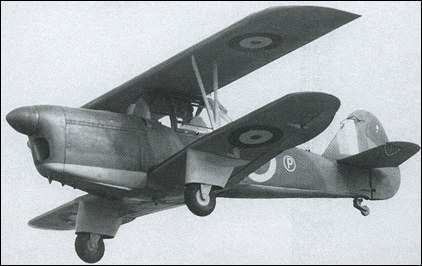|
| A slip-wing research
aircraft able to take off as biplane and fly mission as
monoplane
| john alexander mantova, e-mail, 28.08.2017 01:22 Re testing sites RAF Zealand might be RAF SEALAND and also in Hurricane F40 form at the C.A,M. School at Liverpool .I could be wrong of course reply | | JOHN MANTOVA, e-mail, 28.08.2017 01:14 Would love plans or engineering drawings for this .It's lovely as a monoplane reply | | Colin Dodds, e-mail, 18.12.2014 22:47 There is a useful half page period article on this in the Aeroplane Spotter vol V no 112 June 15th 1944. reply | | mac, e-mail, 11.12.2013 18:22 I was told that slip wing Hurricans were secretly tested at RAF Zealand in the UK . The plan was to mount them on the bow of a merchant ship, to ward off German long range bombers. Mission accomplished , the aircraft was then ditched and hopefully the pilot was rescued . Sounds like a lot of trouble , but if a couple of ships got saved it would have been worth it possibly . reply | |
| | Brian Johnston, e-mail, 27.05.2012 18:50 I have done some research into this plane. Wikipedia has a useful article on it. The idea, originally proposed by Noel Pemberton Billing of Supermarine fame, was a way of increasing the take-off loads for monoplanes, particularly to provide extra fuel tankage for long-range work; the upper 'slip-wing' being jettisoned when no longer needed.
Following the outbreak of WW II Hillsons approached the Air Ministry for a light fighter which could take off from small fields or open roads, using a disposable slip-wing. Although the proposal was not accepted Hillson decided to proceed with a small scale test-bed to prove the slip-wing principle. Two Upper wings were constructed, one of equal span to the monoplne wing and one considerably longer. The Bi-Mono flew from Barton Aerodrome during 1941 in both mono- and bi-plane modes and the shorter upper wing was chosen. Wing jettisoning tests were carried out from Squires Gate Airport at Blackpool, allowing the wing to fall into the Irish Sea and proved successful on 16 July 1941. The Bi-Mono went on to further testing at Boscombe Down whilst Hillson went on to develop and fly the Hillson FH.40 slipwing Hawker Hurricane. Aeroplane Monthly of April 1990 has a useful article by Philip Jarret about the Bi-Mono and various pictures and a good 3-view drawing are available quite easily on the net, including picture(s) of the FH.40 reply | | David Horsley, e-mail, 07.08.2009 23:36 The top wing was a jettisonable fuel tank. The plane was built by F Hills and Sons Ltd at Trafford Park, Manchester. reply |
|
Do you have any comments?
|
| |









